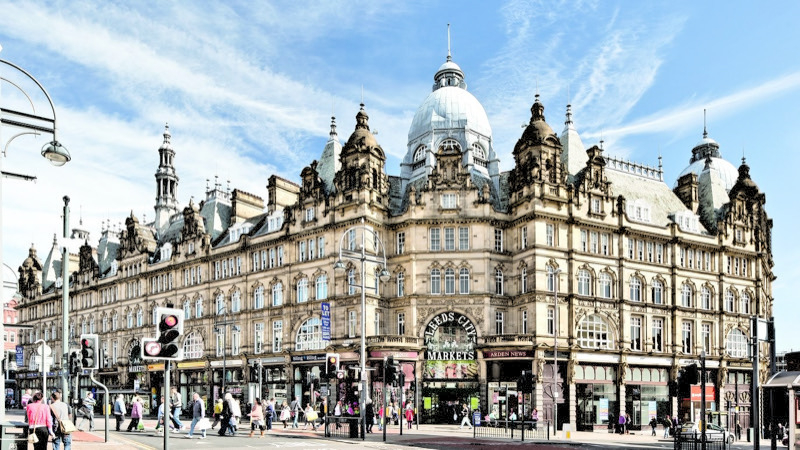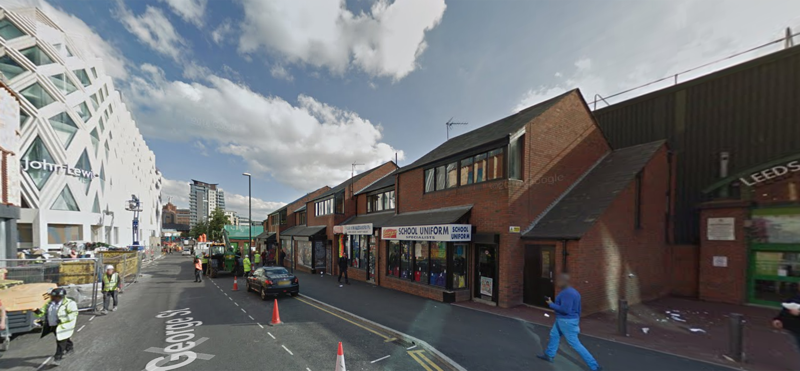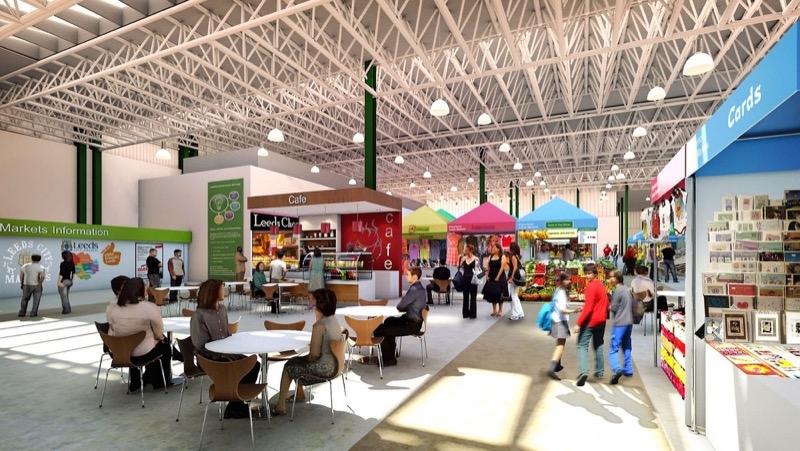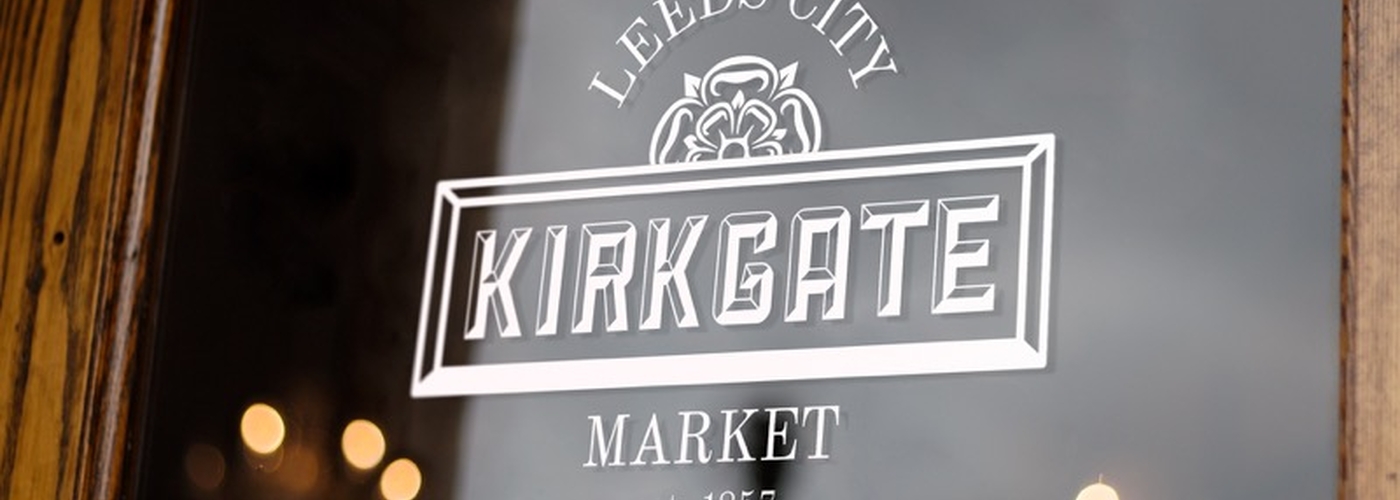Amid claims of gentrification, Jon Howe looks at the struggle between heritage and progress
If this was a TV documentary, it’d open with the iconic fascia, then a panoramic shot of Kirkgate Market’s period arches and the cavernous interior of what is believed to be Europe’s largest indoor market. The camera would then pan down to a shot of empty stalls, and a discarded stripy plastic bag blowing in the wind.
Over the top, a soundtrack would eerily play the echoes of shoppers and a rosy-cheeked, barrel-chested butcher announcing something about chops over a throng of bargain-hunters fighting for elbow space, as they study a sweeping landscape of bangers and black pudding.
That is the staple memory of Kirkgate Market; life, laughter and camaraderie, a social platform and a meeting place, stories of relationships, rituals and traditions, people we saw in the same place, every time, forever, and all in the very heart of Leeds.

News broke last week that a parade of shops on George Street – the breakwater between the market and the new Victoria Gate shopping centre – was being emptied by the council. Retailers, so well established that Cuthbert Broderick probably included them in early sketches for the nearby Corn Exchange, were asked to vacate their premises at the end of their current leases.
There was widespread horror at another cherished aspect of Leeds life being gentrified, 50-year-old chippies, School Uniform Shops, family-run businesses - shops that pioneered Leeds as a prominent retail destination, even if the rest of the city’s shopping glitterati had long since passed them by - washed away in a sea of Veuve Clicquot and Clive Christian No.1.
With the sheen of John Lewis almost blinding shoppers as they loyally shuffle into the remains of Kirkgate Market, there’s an inescapable feeling that change is afoot. It is a widely-held opinion that Leeds City Council has neglected the market for many years, will their influential new friends at John Lewis want the black sheep of the family on its doorstep?

Even if you dismiss 2016’s £14million refurbishment as too little too late, Kirkgate Market remains a prominent and attractive venue, but when looking at who is to blame for the sad demise of a once-thriving market, all roads lead to the council.
While their focus might have slipped in the face of more fanciful distractions, our civic leaders haven’t merely swept all Kirkgate matters away in a file marked ‘Dirty Leeds’.
Nor is the George Street development a case of selling out down-to-earth independent traders in favour of boutique Guatemalan coffee emporiums and such; fears that recently-appointed chair of the council’s market board, Jonathan Pryor, assuaged in a heated online debate this week.
He explained that the council was actually investing further in the market, and the retailers on George Street were being relocated into the south side of the building. Those vacated units would transform into a more attractive entrance; an enticing portal that shouts ‘quality’ to the John Lewis crowd, a physical and metaphorical gateway to traditional stallholders.
The long-mourned ‘Butchers’ Row’ is being re-built in a new location, and while changing consumer trends mean the market will likely never be the community epicentre or the social hub it once was, it still has a part to play in Leeds’s economy, its promotion of free enterprise, and independent spirit.
Last year’s refurbishment of the bottom end of the market provided street food vendors and communal seating to create a more contemporary atmosphere. It might lack the vogue and glamour of Trinity Kitchen, but stellar residents such as Manjit’s Kitchen give it a fighting chance of becoming more than just a cut-through to the Bus Station.

Social spaces, free Wi-Fi, a ‘pop-up’ culture, and world foods are the demands of the contemporary shopper, and the market is simply changing with the times by offering them. A council spokesman confirms that the vast expanse of nothing in the new hall is an events space for craft fairs, wedding fairs, job fairs and the like. The council have even started running heritage tours to officially show off the market’s unique history.
The market is becoming an adaptable venue: still promoting local businesses and local people - albeit by modern methods - while also giving those traders who prefer traditional approach an opportunity to do so.
Accusations of prohibitive rates for stallholders are a concrete argument that can be levelled at the council; and perhaps a factor contributing to the market’s changing demographic in recent years? If the council can justify their prices as competitive though, maybe it’s down to the traditional market stallholder occupying an outdated landscape that’s probably been doomed since the mid-90s?
That is a question only the council can answer. While they’re enjoying the overspill footfall from Victoria Gate and reflect on the success of a rebranding exercise putting Kirkgate Market’s local identity front and centre, I don’t know how receptive they’d be to accusations of neglecting the market, or stifling its potential.
The future of the market lies in its evolution. Undoubtedly this won't be to everyone’s tastes, or in tune with everyone’s idea of retaining its heritage of pride, tradition and quality, but remember that this is a drop in the ocean of the building’s 160 year history; a perpetual work-in-progress. So let’s keep checking back in to find out how it’s getting on, y’know, like our Grandparents used to do.



